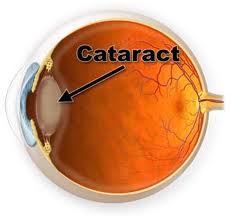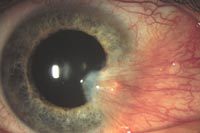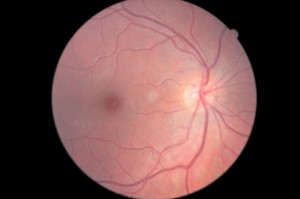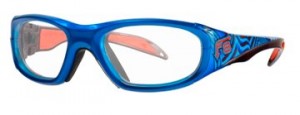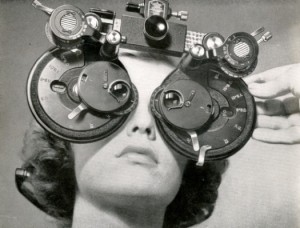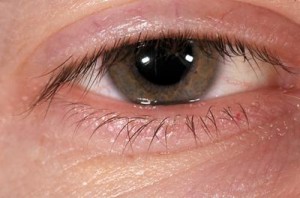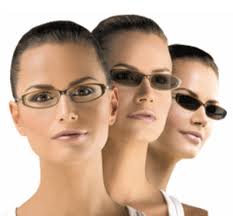Most people wouldn’t dream of mowing the lawn barefoot. But most people don’t hesitate to weed-whack without protective eyewear. Eye injuries from rocks and debris thrown by household tools like lawn mowers, chain saws and weed trimmers occur daily.

In California, OSHA regulations and enforcement of personal protective equipment have reduced the number of injuries in the workplace. Now most eye injuries happen at home.
What makes safety glasses safe?
Safety frames must pass two rigorous impact tests, which dress frames do not undergo, to be marked Z87 (the ANSI, American National Standards Institute, requirement). A special device call an Alderson Head Form, which simulates a physical human head is used.
The High Velocity Impact Test
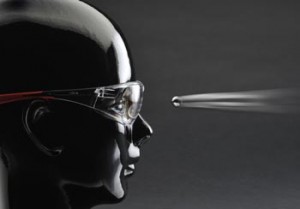 A 1/4″ steel ball traveling at 150 feet per second is directed at different designated positions on the front and side of a frame glazed with plano lenses. No contact with the eye or head form is permitted as a result of the impact, nor shall any parts or fragment be ejected from the protector that could contact an eye of the head form.
A 1/4″ steel ball traveling at 150 feet per second is directed at different designated positions on the front and side of a frame glazed with plano lenses. No contact with the eye or head form is permitted as a result of the impact, nor shall any parts or fragment be ejected from the protector that could contact an eye of the head form.
The High Mass Impact Test
A pointed projectile weighing 17.6 ounces is dropped from a height of 51.2″ on a glazed frame. No parts or fragments shall be ejected from the protector that could contact an eye of the head form.
Prescription Safety Frames
If you need correction to see, safety frames can be made with prescription 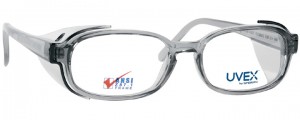 lenses that meet ANSI. The lenses and frame will have Z87 on them. The lenses must pass a drop ball test. (A 1″ steel ball is dropped on the lens from 50″ high.)
lenses that meet ANSI. The lenses and frame will have Z87 on them. The lenses must pass a drop ball test. (A 1″ steel ball is dropped on the lens from 50″ high.)
Please note that safety glasses and sports glasses are not interchangeable. Sport glasses do not need to pass ANSI tests and safety glasses are not appropriate for sports applications.
If you are working in the yard or the garage, put on a pair of safety glasses. Westside Optometry has different styles of ANSI approved safety glasses to make in prescription. We offer safety frames in plastic and metal materials with side shield options.
To see chart of eye hazards and the recommended protective device, click here.
 course work at UC Berkeley. I put it on hold because the state requirements were insurmountable. Laws changed and last January I made the decision to finish what I started with more coursework through UC Berkeley. After hours of online cases and tests (how things changed in 10 years) and two days of grand rounds at the School of Optometry I had completed all the education and patient cases.
course work at UC Berkeley. I put it on hold because the state requirements were insurmountable. Laws changed and last January I made the decision to finish what I started with more coursework through UC Berkeley. After hours of online cases and tests (how things changed in 10 years) and two days of grand rounds at the School of Optometry I had completed all the education and patient cases.